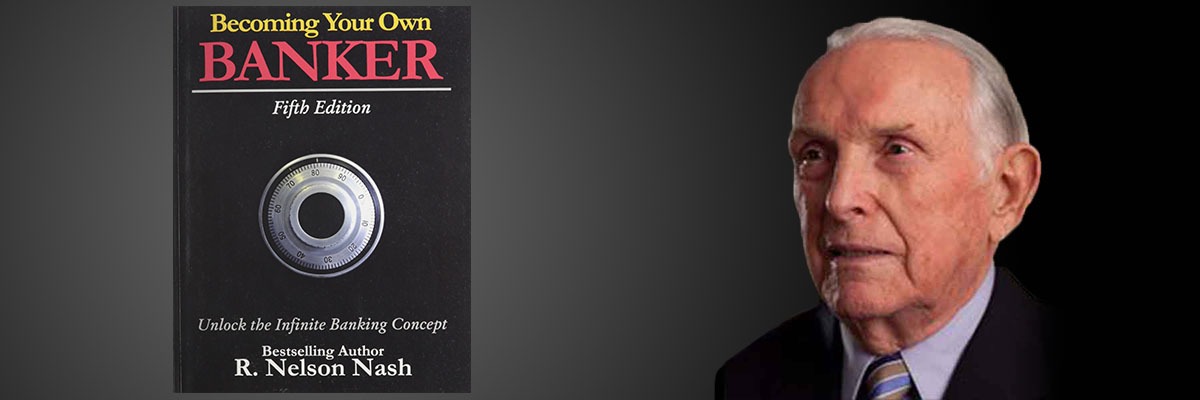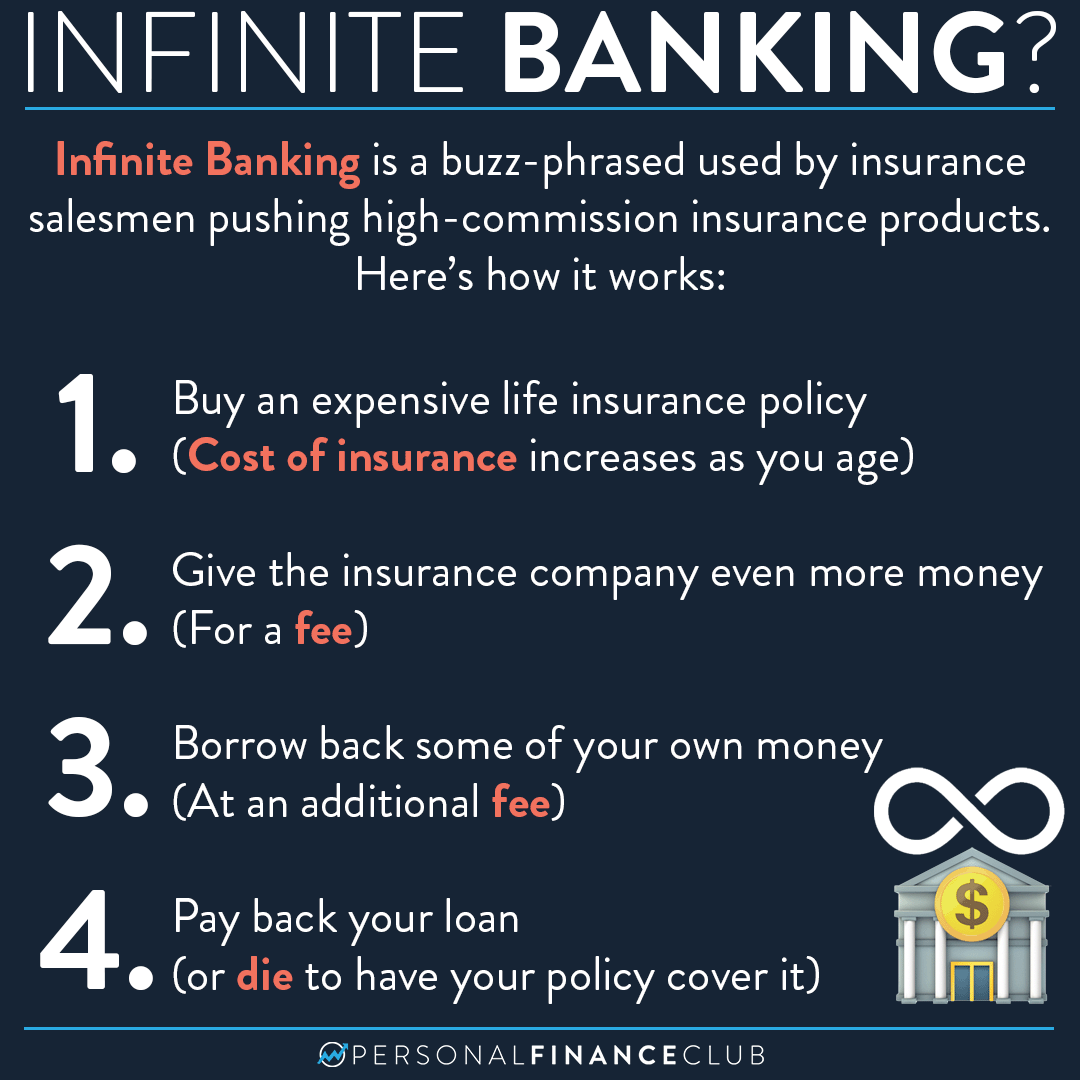All Categories
Featured
Table of Contents
The downsides of limitless banking are typically overlooked or otherwise stated in any way (much of the information offered regarding this concept is from insurance agents, which might be a little prejudiced). Only the money value is expanding at the returns price. You likewise need to pay for the expense of insurance coverage, costs, and expenditures.

Firms that provide non-direct acknowledgment fundings might have a lower reward price. Your money is secured right into a complex insurance policy item, and abandonment charges normally don't vanish till you have actually had the policy for 10 to 15 years. Every long-term life insurance plan is various, but it's clear a person's overall return on every dollar invested in an insurance policy product might not be anywhere close to the reward price for the plan.
How To Use Life Insurance As A Bank
To give an extremely basic and hypothetical instance, let's presume someone is able to gain 3%, on average, for every dollar they spend on an "limitless financial" insurance item (after all costs and fees). If we assume those bucks would be subject to 50% in taxes complete if not in the insurance product, the tax-adjusted rate of return might be 4.5%.

We assume greater than ordinary returns on the entire life product and an extremely high tax obligation price on dollars not put right into the plan (which makes the insurance policy item look much better). The reality for several individuals may be even worse. This fades in comparison to the long-lasting return of the S&P 500 of over 10%.
Boundless banking is a fantastic item for representatives that offer insurance policy, however may not be optimal when compared to the less costly alternatives (without any sales individuals making fat payments). Below's a breakdown of some of the various other supposed advantages of infinite banking and why they might not be all they're fractured up to be.
Becoming Your Own Banker Nelson Nash Pdf
At the end of the day you are purchasing an insurance coverage product. We enjoy the defense that insurance supplies, which can be gotten much less expensively from a low-priced term life insurance coverage plan. Overdue loans from the plan may likewise decrease your fatality benefit, diminishing another level of security in the policy.
The concept only functions when you not only pay the significant costs, however use added money to purchase paid-up additions. The opportunity price of all of those dollars is incredible exceptionally so when you can instead be investing in a Roth IRA, HSA, or 401(k). Also when contrasted to a taxable investment account or perhaps an interest-bearing account, boundless banking might not provide equivalent returns (contrasted to investing) and equivalent liquidity, gain access to, and low/no fee framework (contrasted to a high-yield savings account).
With the rise of TikTok as an information-sharing system, economic guidance and strategies have found a novel method of spreading. One such strategy that has been making the rounds is the infinite financial principle, or IBC for short, garnering endorsements from stars like rapper Waka Flocka Fire. While the approach is currently prominent, its roots map back to the 1980s when financial expert Nelson Nash introduced it to the globe.

Within these policies, the cash worth expands based on a rate set by the insurance company. Once a considerable cash worth gathers, insurance holders can acquire a money value financing. These financings differ from traditional ones, with life insurance policy serving as security, implying one might shed their coverage if loaning exceedingly without sufficient money worth to sustain the insurance coverage costs.
Infinite Banking Concept Dave Ramsey
And while the attraction of these policies appears, there are natural restrictions and risks, necessitating thorough cash money worth tracking. The method's legitimacy isn't black and white. For high-net-worth individuals or entrepreneur, especially those using techniques like company-owned life insurance policy (COLI), the benefits of tax obligation breaks and substance growth can be appealing.
The allure of boundless financial does not negate its difficulties: Price: The fundamental requirement, a permanent life insurance coverage policy, is pricier than its term counterparts. Qualification: Not everyone certifies for entire life insurance policy due to rigorous underwriting procedures that can omit those with certain wellness or way of living problems. Complexity and risk: The intricate nature of IBC, combined with its threats, may discourage several, especially when simpler and much less risky choices are readily available.

Designating around 10% of your regular monthly earnings to the plan is simply not possible for many individuals. Part of what you review below is merely a reiteration of what has already been stated above.
So before you obtain into a situation you're not planned for, understand the complying with initially: Although the principle is generally sold thus, you're not in fact taking a lending from on your own - personal banking concept. If that were the situation, you would not have to settle it. Rather, you're borrowing from the insurance provider and need to settle it with passion
How To Create Your Own Bank
Some social media posts suggest making use of cash worth from whole life insurance policy to pay down credit report card financial obligation. When you pay back the loan, a part of that passion goes to the insurance coverage business.
For the very first a number of years, you'll be settling the commission. This makes it incredibly hard for your plan to build up worth throughout this moment. Whole life insurance coverage costs 5 to 15 times a lot more than term insurance policy. Most individuals simply can't afford it. Unless you can afford to pay a couple of to a number of hundred bucks for the next decade or even more, IBC will not work for you.
If you call for life insurance policy, right here are some important suggestions to take into consideration: Consider term life insurance coverage. Make certain to shop about for the best price.

Boundless banking is not a product or solution provided by a certain establishment. Unlimited financial is an approach in which you get a life insurance plan that gathers interest-earning money worth and secure loans against it, "borrowing from yourself" as a source of resources. Then ultimately pay back the car loan and begin the cycle throughout again.
Pay plan costs, a part of which builds cash money worth. Take a funding out versus the policy's money worth, tax-free. If you use this principle as meant, you're taking money out of your life insurance policy to purchase whatever you 'd need for the remainder of your life.
Latest Posts
Your Family Bank - Become Your Own Bank - Plano, Tx
Benefits Of Infinite Banking
How To Be Your Own Bank In Canada: Infinite ...